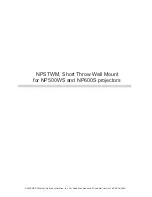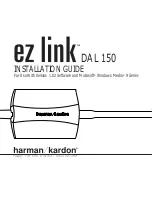
11
EN
INTRODUCTION
The PIR (Passive Infra Red) sensor continuously scans a preset operating zone that you
have selected to light for reasons of safety, convenience or security e.g. pathways, steps,
patios, porches etc. Whenever movement is detected within the range of the sensor, the
load light will switch on automatically. While there is movement within range of the unit
the load light will remain on.
MOUNTING
To achieve best result, we suggest you take into account the following points:
•
Do not mount on a vibrating surface.
•
Ideally the PIR Sensor should be mounted 2.5 to 3 metres above the area to be
scanned.
•
To avoid damage to unit, do not aim the sensor towards the sun.
•
To avoid nuisance triggering, the sensor should be directed away from heat sources
such as barbecues, air-conditioners, other outside lighting, moving cars and flue vents.
•
To avoid nuisance triggering, keep away from areas with strong electromagnetic dis-
turbance.
•
Do not aim towards reflecting surfaces such as white walls, swimming pools etc.
•
The PIR Sensor’s scanning specifications (approx. 10 metres at approx. 180° horizontal)
may vary slightly depending on the mounting height and location. The detection range
of the unit may also alter with temperature change. Before selecting a place to install
you PIR Sensor you should note that movement across the scan area is more effective
than movement directly toward or away from the sensor. If movement is made walk-
ing directly towards or away from the sensor and not across, the apparent detection
range will be substantially reduced.
INSTALLATION
1. Installation by a licensed electrician.
2. Switch power off and ensure that there is no power to the light.
3. Unscrew the bottom screw and remove the back plate (see Fig 1, on next page).
4. Let power cable and load cable pass through the rubber sealing at the back plate
(see Fig 5, on next page).
5. Fit the back plate to the mounting surface, measure the position of the holes and
drill two holes in the wall (see Fig 2, on next page).
6. Fasten the back plate with screws (see Fig 3, on next page).
7. Connect the main cable and load cable to the terminal block (see wiring diagram
Fig. 4, on next page).
8. Refit the terminal block.
9. Fit the body to the back plate and tighten screw.
10. Switch the power on, then adjust the PIR Sensor to desired settings.
Summary of Contents for 99 190 17-18
Page 15: ...15...


































